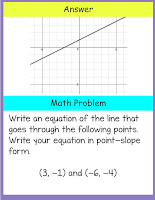How can we encourage our students to think critically in Kindergarten and First grade? As a school, we have been focusing on asking questions that inspire deeper-level discussions. Teaching students to critically think about what they are reading is the key to comprehension and developing the love of reading. In this post, I will discuss how I teach some basic critical thinking skills to my first graders.
Explaining inference, prediction, cause and effect, and forming opinions to children as young as first grade is really not as complicated as you think. In fact, many of the expected thinking skills are questions that actually come up in natural conversations! I bet you are doing most of this "instinctively" already.
So, how can we intentionally ask questions that get our students critically thinking about the books they read/hear?
I know most of us are already asking questions of our students while reading specific texts. We cannot expect students to just listen to a read-aloud or read a book chapter and just move on. We must challenge and excite their love of reading. We must label what we are actually doing (as far as critical thinking skills are concerned) in our minds and find a way to remind ourselves to ask those types of questions regularly and deliberately. There are many ways to do this, but one way I've been doing this is to keep a list of critical thinking questions close to me as we read.
Teaching our students to answer critical thinking questions about stories that are read aloud or that they read is a win-win situation, significantly when you consider discussing these questions with your students, will surely enhance their listening comprehension in general, PLUS they'll be working on their oral language skills too. I always tell my kids that these thinking questions are great because there are no wrong answers, except refusing to try. Think of how much critical thinking goes into asking a student to elaborate by asking "How else could this story have ended? or have them hypothesize by asking "Why do you think the author chose ________ as the villain? or to develop a logical argument by asking "What do you think would have happened if the main character had done __________?
It's important not to train your students to get used to one correct answer, and the rest of the answers are wrong. If you are asking a text-based question, this must happen, and you can let students know that this is the case, but when asking a critical thinking question, a creative discussion is what you are seeking. Here is a little trick that I like to use when one of my students says they don't know the answer. Just say, "If you did know, what would you say?" It's so important to relieve students of thinking they always have to get the answer correct.
Where do I begin?
It can be overwhelming to teach and then ask these critical thinking skills to young children. If you teach it at their level and break it down into parts that they understand. I like to focus on one skill at a time and ask one excellent question instead of many questions that can be confusing.
Let's look at how to break down some critical thinking skills:
1. Hypothesis- I tell my students to take a really smart guess based on what they already know.
-Why do you think foxes and wolves always seem to be the bad guys in a story?
2. Develop a Logical Argument- Tell me why you believe something is true, and really think for a minute because I will ask you to tell me a lot about why you think so.
- What do you would have happened if the characters in the Mitten if the mouse had not decided not to go inside the mitten? Do you think the mitten would have popped? Tell me more...
3. Predict- What do you think will happen next?
- David just broke the vase with his baseball bat. What do you think might happen next?
4. Cause and Effect- I teach my students the cause is what started it, and the effect is what happened.
- What made the _____ _____? What happened then?
5. Infer- Look at the picture, and tell me what you think is happening and why.
- Have your students use the illustrations to tell what happened and how they think this happened.
6. Connect Text to Self- Has anything like this ever happened to you?
- The little bird is sad because it does not know where its mother is, and he feels lonely. Have you ever felt lonely?
7. Evaluate- Decide whether or not something was a good idea or a bad idea.
- The children let the Cat in the Hat in the house when their mom was not home. Was this a good or bad idea? Why or why not?
8. Draw Conclusions- Think about the WHOLE story and tell me what you think.
- Is this story real or make-believe? Why do you think so?
9. Compare and Contrast- Tell me how these things are different. Now tell me how they are the same.
- Look at the carrot and the pumpkin. How are they different? How are they the same?
10. Form an Opinion- How do you feel about this? Do you like it? Why or why not?
- Did you like this book? Did you not like this book? Why or why not?
Please email me with any questions or if you'd just like a buddy in wrapping your head around questioning. I'd love to learn with you!
Positively Teaching,
Randi Muehlen
@positively_teaching














